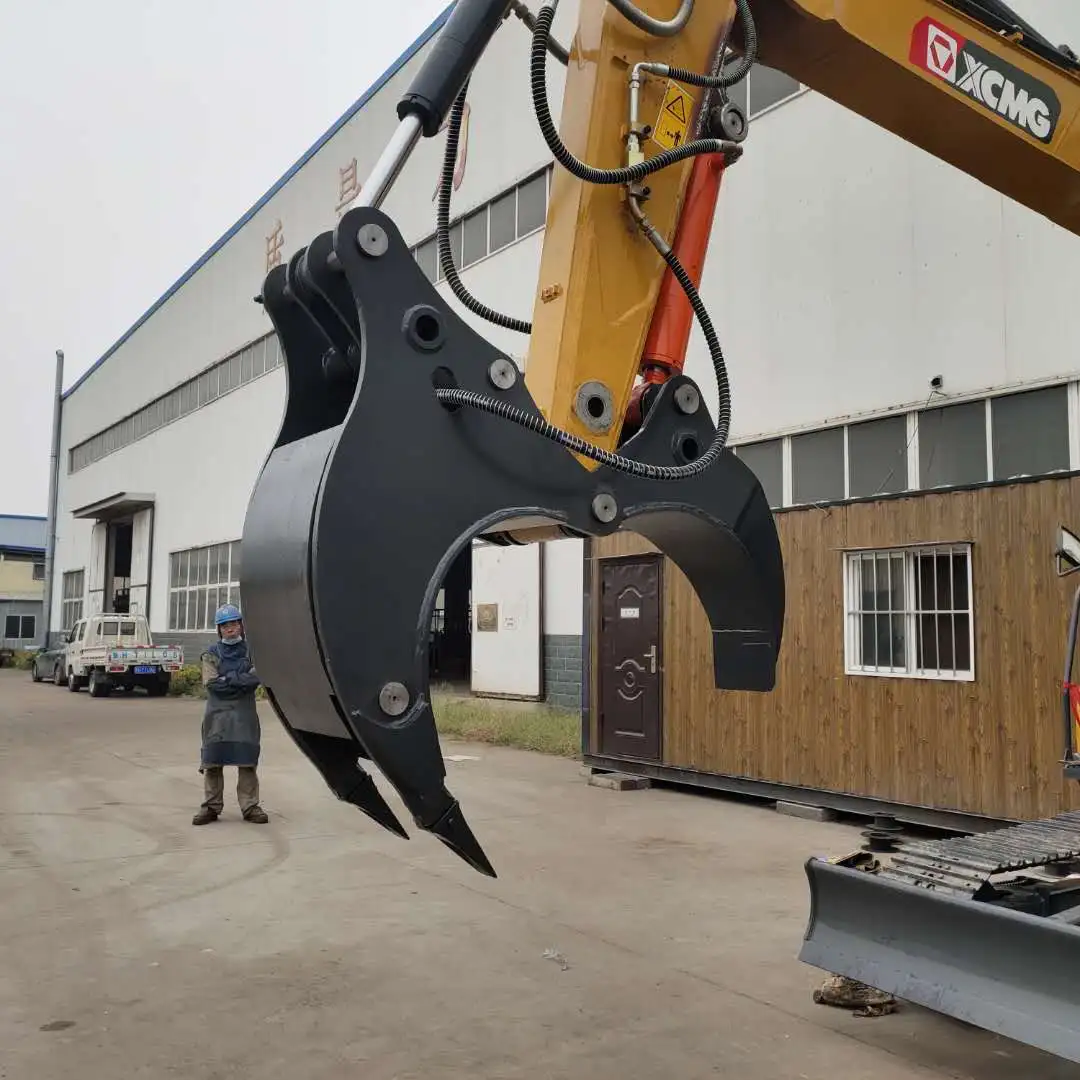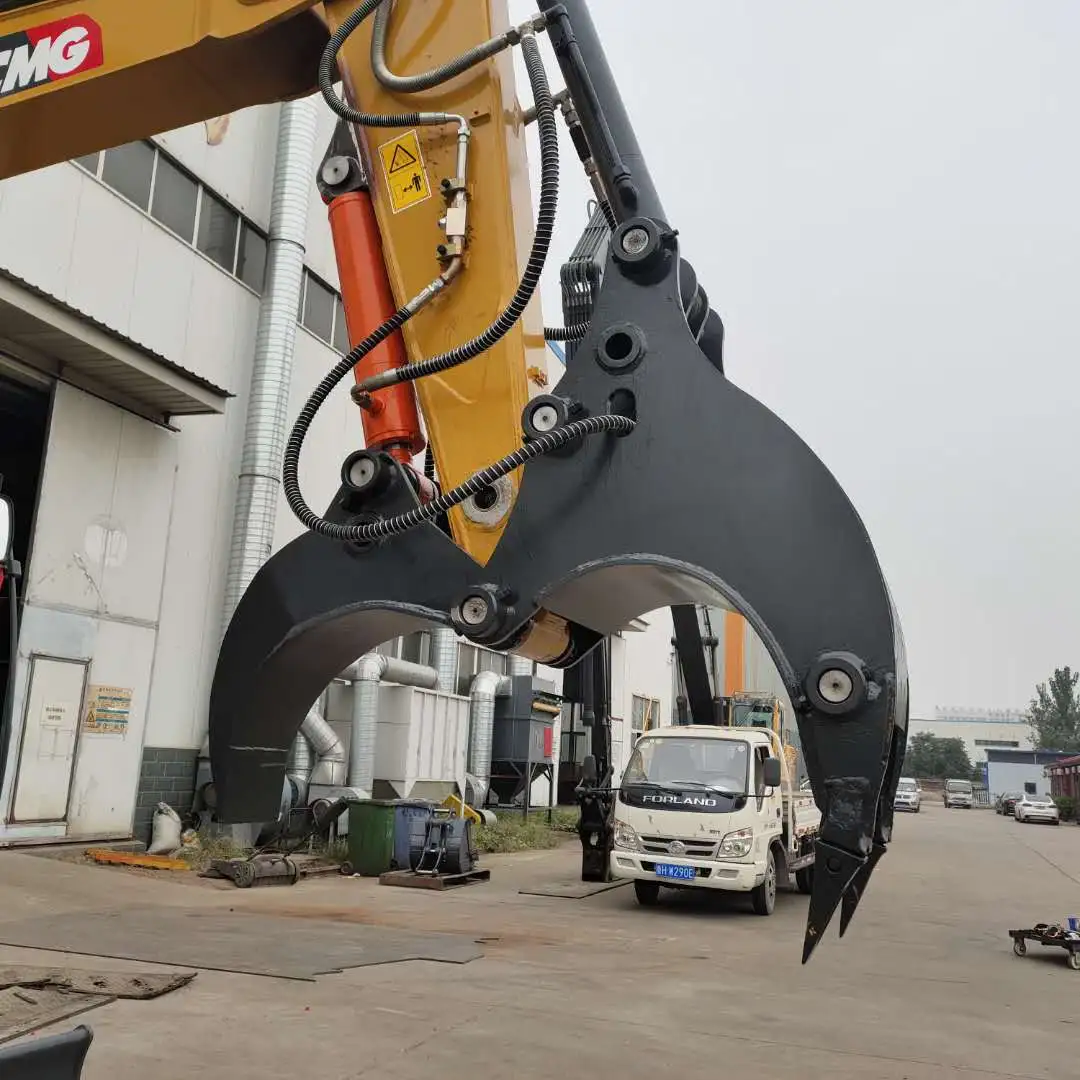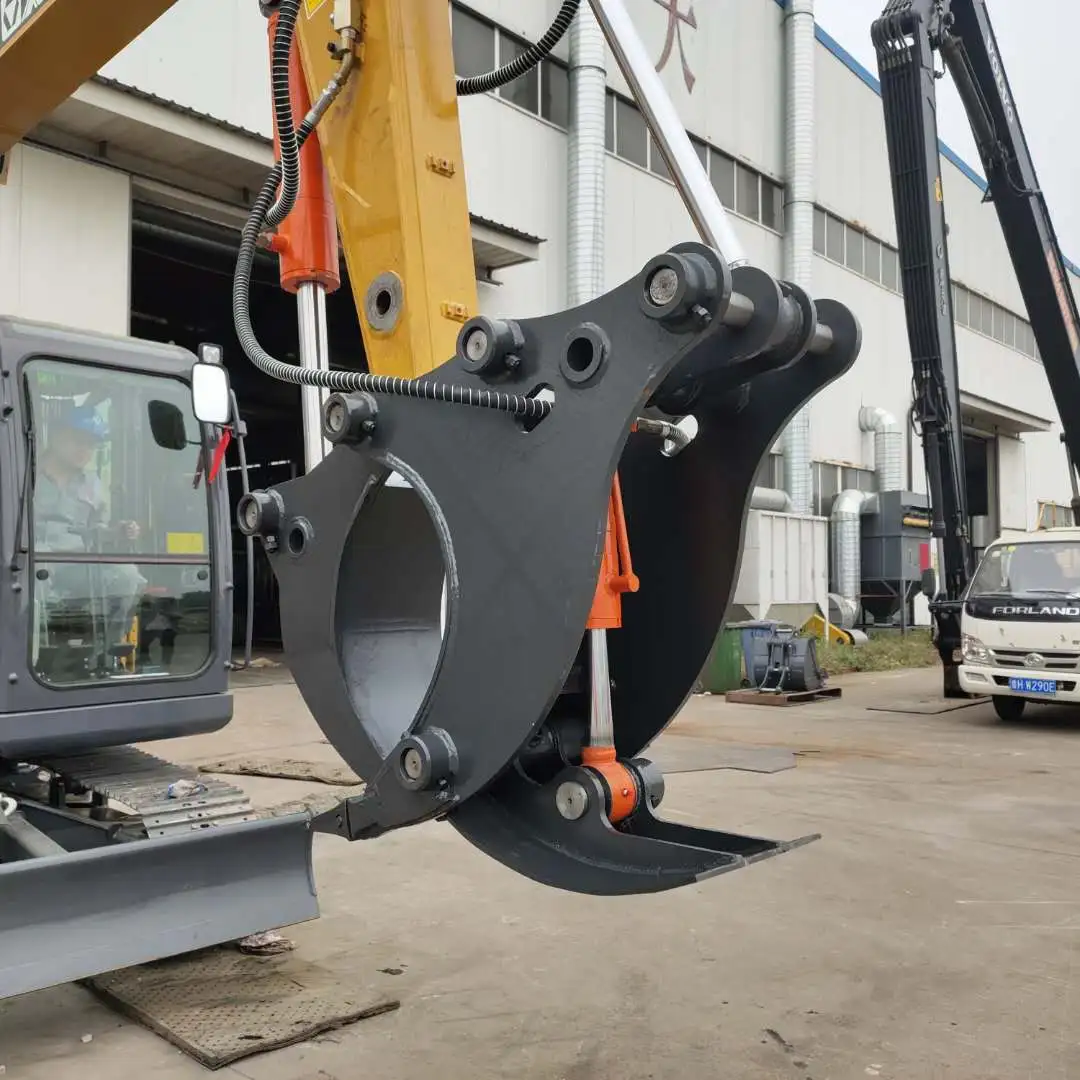What size excavator to remove tree stumps?
Choosing the right excavator size for tree stump removal depends on several crucial factors including stump diameter, root system depth, and project scope. Generally, excavator tree stumper operations require machines ranging from compact 7-ton units for residential work to heavy-duty 25-ton excavators for commercial forestry projects. The optimal size balances power, maneuverability, and cost-effectiveness for your specific requirements.
Tree stump removal using excavators has revolutionized land clearing operations across construction, landscaping, and forestry industries. Unlike traditional stump grinding methods, excavator-based removal offers complete root system extraction, preparing sites thoroughly for new construction or replanting. The key lies in matching excavator specifications to stump characteristics and operational constraints.
Modern tree stumper attachments have transformed how professionals approach stump removal. These specialized tools maximize excavator efficiency while minimizing ground disturbance. Understanding excavator sizing ensures project success, whether you're clearing residential lots or preparing commercial development sites.

7 - 15 Tons
Compact Excavator Applications
Compact excavators in the 7-15 ton range excel at residential and small commercial stump removal projects. These versatile machines navigate tight spaces while delivering sufficient power for stumps up to 24 inches in diameter. Their reduced ground pressure makes them ideal for finished landscapes where minimizing lawn damage is essential.
The 7-10 ton category handles typical residential tree stumps from mature oak, maple, and pine trees. These machines feature excellent hydraulic capabilities relative to their size, allowing effective root cutting and stump extraction. Their compact footprint enables access through standard gates and around existing structures.
Mid-range 12-15 ton excavators bridge the gap between compact and full-size machines. They tackle larger residential stumps and smaller commercial projects with enhanced digging force and reach. These units often represent the sweet spot for landscaping contractors handling diverse stump removal contracts.
Efficiency Considerations
Compact excavators maximize efficiency through specialized stump removal attachments including hydraulic thumbs, root rakes, and grapplers. These tools enable precise root cutting and debris handling without requiring additional equipment on site. The combination of maneuverability and functionality makes compact units cost-effective for many applications.
Fuel efficiency becomes particularly important for contractors operating multiple compact excavators daily. Modern 7-15 ton machines incorporate advanced hydraulic systems and diesel engines optimized for continuous operation. This efficiency translates directly to reduced operating costs and improved project profitability.
Operator comfort and visibility enhance productivity during extended stump removal sessions. Compact excavators feature ergonomic cabs with excellent sightlines to attachment points, reducing operator fatigue and improving safety. Enhanced controls allow precise manipulation required for careful stump extraction around utilities and structures.
Operational Advantages
Transportation convenience represents a significant advantage for compact excavator tree stumper operations. Most 7-15 ton machines transport on standard trailers without special permits, enabling quick mobilization between job sites. This flexibility allows contractors to serve diverse geographic areas efficiently.
Ground protection capabilities make compact excavators suitable for sensitive environments including parks, residential areas, and established landscapes. Rubber track options and flotation capabilities minimize surface damage while maintaining adequate traction for stump pulling operations.
Versatility extends beyond stump removal as compact excavators handle various landscaping and construction tasks. This multi-functionality maximizes equipment utilization and return on investment for contractors maintaining diverse service offerings. The same machine excavates for new plantings, handles material placement, and performs general earthwork.

17 - 23 Tons
Commercial Grade Performance
Medium-sized excavators in the 17-23 ton range deliver commercial-grade performance for substantial stump removal projects. These machines handle large hardwood stumps, multiple stump sites, and challenging root systems that would overwhelm smaller equipment. Their increased hydraulic power and digging force tackle the most stubborn stumps efficiently.
The 17-20 ton category excels at clearing construction sites and commercial developments where speed and power are priorities. These excavators remove stumps up to 36 inches in diameter while maintaining reasonable fuel consumption and operational costs. Their enhanced reach enables working around obstacles and accessing difficult terrain.
Heavy-duty 21-23 ton machines represent serious commercial capability for large-scale land clearing operations. These units handle massive stumps from century-old trees and dense root systems common in virgin timber areas. Their substantial weight provides necessary counterbalance for aggressive pulling operations without compromising stability.
Enhanced Capabilities
Advanced hydraulic systems in medium excavators deliver superior flow rates and pressure for demanding excavator tree stumper applications. These systems power larger attachments including heavy-duty grapplers, multi-processors, and specialized stump pullers. The increased capability enables tackling projects impossible with smaller equipment.
Extended reach configurations available in this size range provide access to stumps in challenging locations including steep slopes, wetland edges, and confined spaces. Long-arm options maintain full hydraulic power while extending operational radius significantly. This capability reduces the need for multiple equipment positions during site clearing.
Counterweight systems in medium excavators enable aggressive stump pulling without rear lifting or instability. Properly configured machines maintain safe operation while maximizing pulling force applied to stubborn root systems. This capability proves essential when extracting large stumps with extensive lateral root spread.
Production Benefits
Production rates increase substantially with medium excavators due to their ability to handle larger stumps in single operations. Rather than requiring multiple attempts or additional equipment, these machines complete stump removal efficiently. The time savings translate directly to reduced labor costs and improved project schedules.
Debris handling capabilities allow medium excavators to process removed stumps and root systems on-site. Larger bucket capacity and enhanced lifting power enable efficient material sorting, loading, and placement. This integrated approach eliminates the need for separate equipment to manage removal debris.
Site preparation efficiency improves when medium excavators combine stump removal with other earthwork operations. These versatile machines perform rough grading, drainage work, and utility installation using the same equipment. This consolidation reduces mobilization costs and simplifies project coordination for contractors.

Key Considerations
Site Assessment Factors
Accurate site assessment forms the foundation of successful excavator selection for tree stump removal projects. Soil conditions significantly impact excavator requirements, with clay soils demanding more power than sandy conditions. Rocky or frozen ground may require specialized attachments or modified techniques to achieve effective stump extraction.
Access limitations often determine maximum excavator size regardless of stump characteristics. Narrow gates, overhead utilities, and weight restrictions limit equipment options for many residential and urban projects. Careful measurement and planning prevent equipment selection errors that could delay or complicate project completion.
Environmental considerations including wetland proximity, erosion potential, and protected vegetation influence excavator selection and operational methods. Sensitive sites may require compact machines with low ground pressure or specialized track systems. Understanding regulatory requirements ensures compliance and prevents project interruptions.
Economic Analysis
Cost analysis should consider both direct operating expenses and indirect project impacts when selecting excavator size for stump removal. Larger machines typically feature higher hourly rates but complete work faster, potentially reducing total project costs. Detailed analysis of stump quantities and characteristics enables accurate cost projections.
Equipment availability and rental rates vary significantly by region and season, influencing optimal excavator selection. Peak construction periods may limit access to preferred sizes, requiring alternative approaches or adjusted schedules. Early planning and equipment reservations help secure appropriate machines at competitive rates.
Productivity factors including operator experience, attachment selection, and site conditions dramatically impact project economics. An experienced operator with proper attachments can achieve remarkable productivity with appropriately sized equipment. Conversely, mismatched equipment or inexperienced operators can inflate costs substantially.
Safety Protocols
Safety considerations become paramount when operating any size excavator tree stumper due to the unpredictable nature of stump removal operations. Proper operator training ensures understanding of machine limitations and safe operating procedures. Regular safety meetings and hazard assessments prevent accidents and equipment damage during stump removal projects.
Underground utility location represents a critical safety requirement before beginning excavator operations near tree stumps. Root systems often intertwine with buried utilities, creating potential hazards during extraction. Professional utility marking and careful excavation techniques prevent dangerous and expensive utility strikes.
Structural considerations including nearby buildings, retaining walls, and paved surfaces require careful analysis before aggressive stump pulling operations. Large root systems may extend under structures, and their removal could cause settlement or damage. Engineering consultation may be necessary for stumps near critical infrastructure.
FAQ
①What's the smallest excavator that can remove tree stumps?
A 7-ton compact excavator equipped with proper excavator tree stumper attachments can effectively remove stumps up to 18 inches in diameter. Smaller stumps from ornamental trees or young specimens can be handled by even lighter machines with appropriate hydraulic thumbs or grapplers.
②How deep should an excavator dig for stump removal?
Excavation depth depends on tree species and stump size, but typically ranges from 2-4 feet below ground level. Hardwood species like oak require deeper excavation due to extensive taproot systems, while shallow-rooted species like maple need less depth for complete removal.
③Can wet conditions affect excavator stump removal?
Wet soil conditions can actually facilitate stump removal by softening root systems and reducing soil compaction around stumps. However, extremely muddy conditions may limit excavator mobility and require specialized track systems or temporary access improvements for safe operation.
④What attachments work best for stump removal?
Hydraulic thumbs, root grapples, and ripper teeth represent the most effective attachments for excavator tree stumper operations. These tools enable precise root cutting, secure gripping, and efficient debris handling. Multi-processor attachments can cut and process removed stumps in single operations.
⑤How long does excavator stump removal take?
Removal time varies from 15 minutes for small residential stumps to several hours for large commercial specimens. Factors including stump size, root complexity, soil conditions, and operator experience significantly impact completion time. Multiple stumps can often be removed efficiently in sequence.
Selecting the appropriate excavator size for tree stump removal requires careful consideration of multiple factors including stump characteristics, site conditions, and project requirements. Whether you need a compact 7-ton machine for residential applications or a heavy-duty 23-ton excavator for commercial land clearing, matching equipment capabilities to project demands ensures efficient and cost-effective operations. Professional assessment and proper equipment selection of TianNuo Machinery maximize productivity while maintaining safety and environmental compliance.
For expert guidance on excavator tree stumper selection and comprehensive machinery solutions, contact our experienced team at rich@stnd-machinery.com. We provide specialized equipment and professional consultation to ensure your stump removal projects achieve optimal results with appropriate excavator sizing and attachment selection.
References
Johnson, M. K. (2023). "Advanced Hydraulic Excavator Attachments for Forestry Operations." International Journal of Construction Machinery Engineering, Volume 45, Issue 3, Pages 287-304.
Chen, L. and Rodriguez, A. (2022). "Mechanical Root System Removal: Efficiency Analysis of Modern Stump Grinding Equipment." Journal of Arboriculture and Urban Forestry Management, Volume 38, Issue 7, Pages 156-171.
Williams, P. J. (2023). "Site Preparation Techniques for Large-Scale Land Clearing Operations." Construction Equipment and Methodology Quarterly, Volume 29, Issue 4, Pages 98-115.
Thompson, R. S. and Liu, H. (2022). "Hydraulic System Optimization for Heavy-Duty Excavator Attachments." Mechanical Engineering Applications in Construction, Volume 52, Issue 2, Pages 67-84.
Anderson, K. M. (2023). "Environmental Considerations in Mechanical Tree Removal Operations." Environmental Engineering and Construction Practices, Volume 31, Issue 6, Pages 203-219.
About Author: Arm
Arm is a leading expert in the field of specialized construction and railway maintenance equipment, working at Tiannuo Company.

